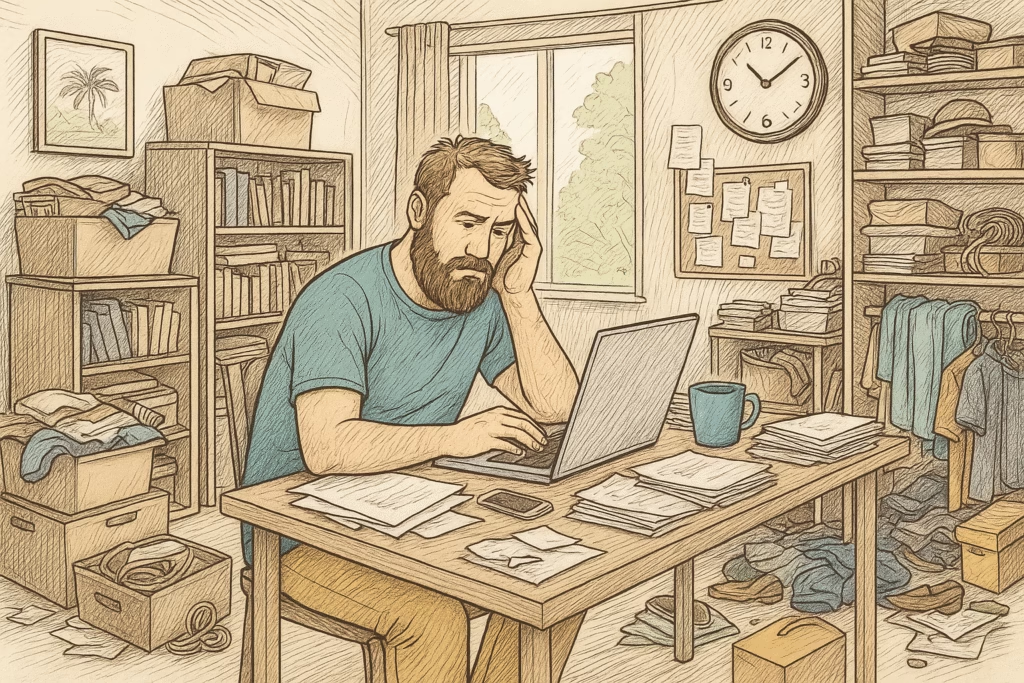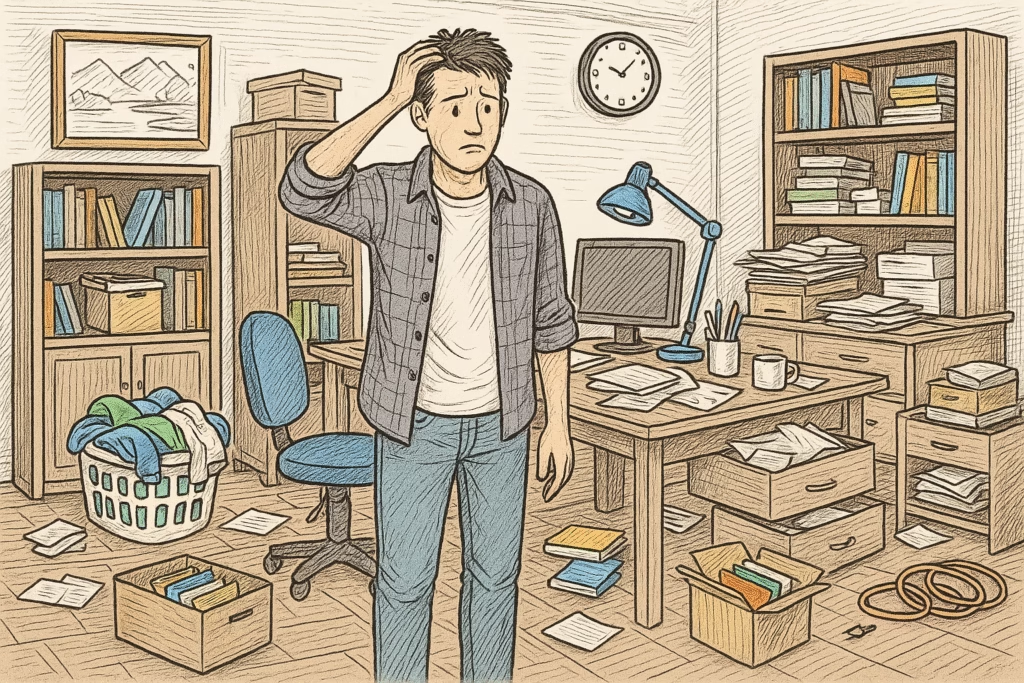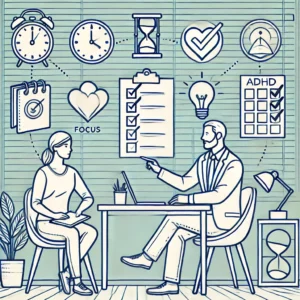If your desk is buried in papers, your bag is a black hole for important items, and you often lose track of where things are, you’re not alone. Chronic disorganization is a daily struggle for many people—especially those with ADHD. But this isn’t just about being “messy.” It’s about how executive functioning challenges affect day-to-day life in a very real and often frustrating way.
In this article, we’ll unpack what chronic disorganization really is, why it shows up so frequently for neurodivergent individuals, and most importantly, what strategies can actually help.
What Is Chronic Disorganization?
Chronic disorganization goes beyond occasional mess. It’s a persistent pattern of disarray that disrupts your ability to function efficiently. It can show up in:
- Living spaces (bedroom, kitchen, car)
- Work environments (desk, computer files, calendar)
- Personal habits (misplacing items, missing deadlines, forgetting tasks)
People with ADHD, autism, or executive dysfunction often face this challenge due to difficulty with working memory, task initiation, and planning skills—not because they’re lazy or careless.
The Neuroscience Behind the Chaos
The brain’s prefrontal cortex is responsible for organizing, prioritizing, and managing tasks. For people with ADHD, this part of the brain works differently. As a result, what seems like a small task—like putting away laundry—can feel overwhelming or even invisible.
Add to this a tendency to hyperfocus (zeroing in on one thing while ignoring everything else) or struggle with transitions, and the clutter can build up quickly.
Why It Matters
Living in disorganized spaces doesn’t just look chaotic—it feels chaotic. It increases stress levels, impairs focus, and can even impact your self-esteem. When every task takes longer because you’re searching for lost items or redoing missed steps, it’s exhausting.
For students or professionals, chronic disorganization can lead to missed opportunities or poor performance. For parents, it can make daily routines feel like an uphill battle.

What Helps: Practical Strategies That Work
The goal isn’t to become perfectly tidy—but to find systems that work for you and reduce friction in your day.
Start With Zones
Designate specific areas for specific items. For example:
- A “drop zone” near the front door for keys, wallets, and bags
- A labeled drawer for chargers, cables, or stationery
- A weekly “reset” basket to return items to their rightful place
Use External Memory
- Set alarms or reminders for tasks
- Use visual cues (sticky notes, labels, checklists)
- Store frequently used items in sight, not in drawers

Try the “10-Minute Tidy”
Set a timer and do a quick pick-up at the same time each day. This builds routine without feeling overwhelming.
Embrace the “Done Is Better Than Perfect” Rule
Aim for functional—not flawless—spaces. A clear-ish desk is better than one you can’t use. A bin labeled “random stuff” can be a win if it helps you find what you need.
When to Seek Support
If disorganization is affecting your relationships, work, or emotional wellbeing, professional support can help. ADHD coaching, occupational therapy, or even virtual organizing services can be game changers.
Many clients at ADHD-Coaching.uk say that having someone to guide them through creating personalized systems makes a huge difference—not just to their space, but to their stress levels and confidence too.
You’re Not Broken—Your Systems Are
Chronic disorganization isn’t a character flaw. It’s a sign that your environment and your brain aren’t syncing up—yet. The good news is that with the right strategies and support, your home, your workspace, and your mind can feel a whole lot clearer.


